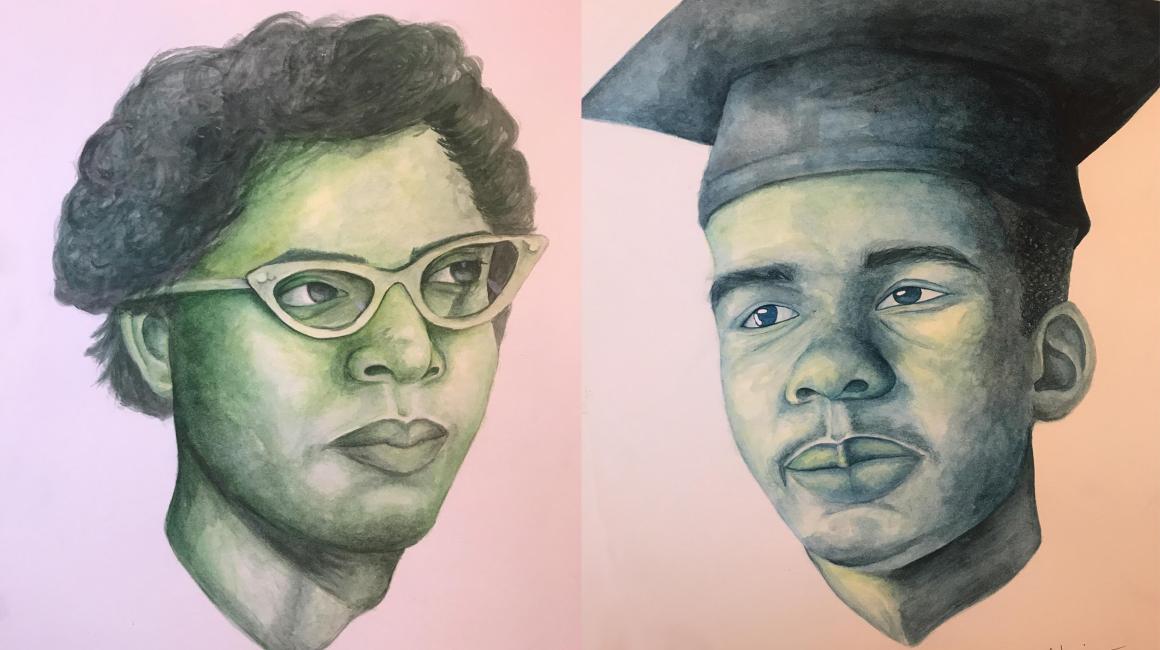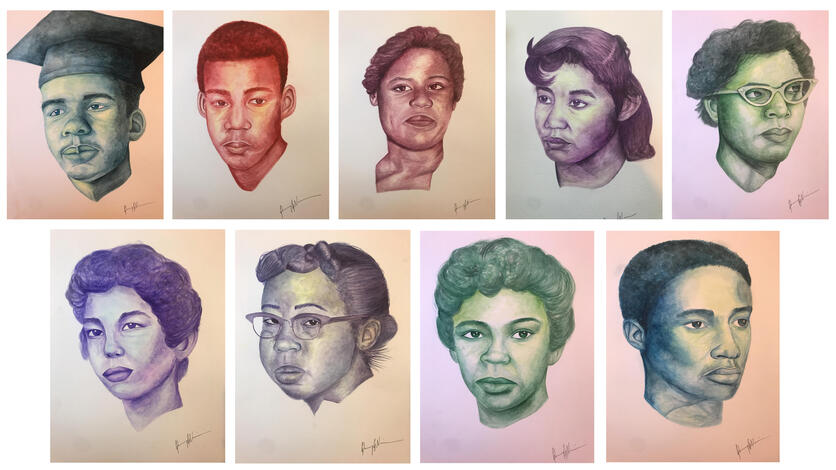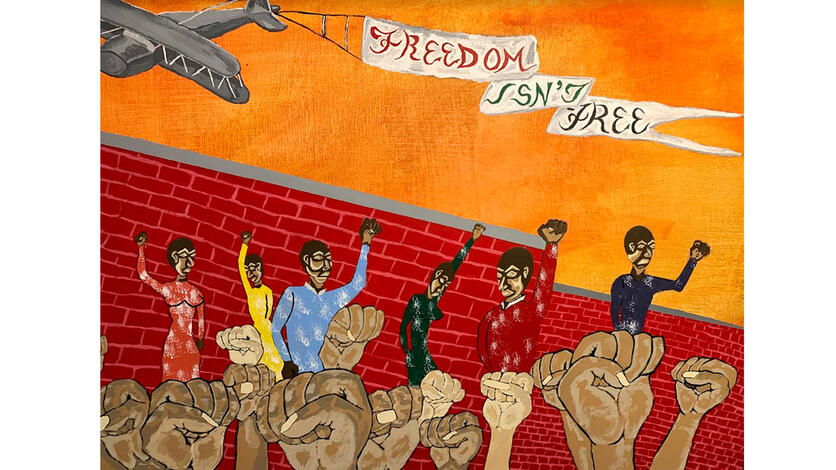
This article was originally published on January 11, 2021.
The Holocaust was the primary context for a recent MCubed project organized by Professor Julie Taylor, Associate Professor Danielle DeFauw, Associate Professor Mike Sevick (UM-Flint) and teachers Tim and Kyria Gore of the Douglass Academy for Young Men in Detroit. And the goal was to use visual art and historic photographs to explore themes of resistance, liberation and memory with high school students. But in light of 2020’s historic protests around racial justice, the group decided to extend the project and apply those themes to the ongoing struggle for racial equality in America.
Two UM-Dearborn undergraduates ended up being central to that effort. With funding from the MCubed grant program and the Office of Metropolitan Impact, Taylor and the team commissioned original pieces from mechanical engineering sophomore Ghassaq Nassir and graduating communication, organizational leadership, and applied art senior Antoinne Bell. Nassir’s work consists of nine moody watercolor portraits of the “Little Rock Nine” — the group of nine Black students who enrolled in Little Rock, Arkansas’s Central High School in 1957 as the first big test of the Supreme Court’s 1954 landmark school desegregation ruling. Bell, who specializes in abstract art, created a murallike painting that explores the generational inheritance of activists in the Black liberation movement.
Nassir says she decided to do individual portraits of the Central High School students to highlight their intense personal courage. “We typically refer to the ‘Little Rock Nine’ as a group, but as I explored each of their stories, I thought it was important to remember that each of them were individuals who decided to do this incredibly brave thing.” Interestingly, Nassir says the monochromatic treatment for each portrait was rooted in her synesthesialike experiences of each of their stories. “It’s kind of weird, but sometimes when I meet a person, I associate a color with them,” Nassir says. “So as I learned more about each person, I started to associate a color with their stories and that’s the color I used for each painting.”

Bell’s acrylic on canvas, which measures about two feet by three feet but has the feel of a building-size work, features protestors marching atop a sea of fists. Bell says the fists represent the foundation laid by past generations of Black liberation activists, who have made it possible for today’s activists to make new gains. One of the most striking features of Bell’s painting is the high contrast used in the faces of the contemporary protestors, which shades from light to dark within each face. Bell says that technique acknowledges that the African American Freedom Movement can’t just be considered the work of Black people, but a cause everyone must be part of. “If things keep going the way they are, we’re all going to be part of one big human race,” Bell says.

oth Bell and Nassir’s works have now been donated to the collection at the Douglass Academy, where Taylor says students and educators will use them in the coming years.
###
Taylor, DeFauw and Sevick’s research article about their project, “Holocaust memorial art and history education,” was recently accepted for publication in “The National Social Science Journal.”




